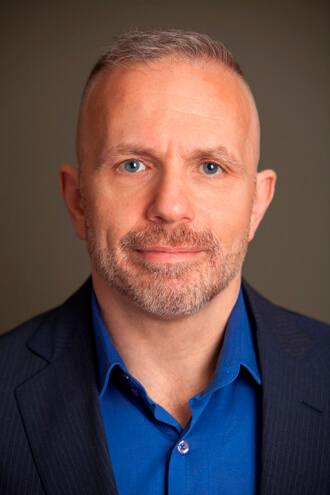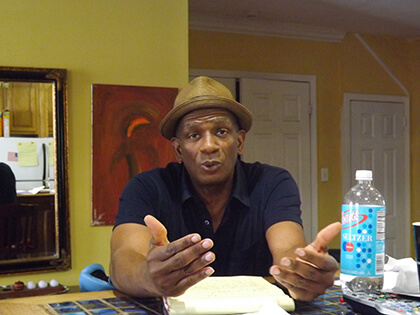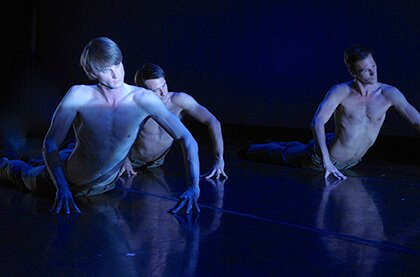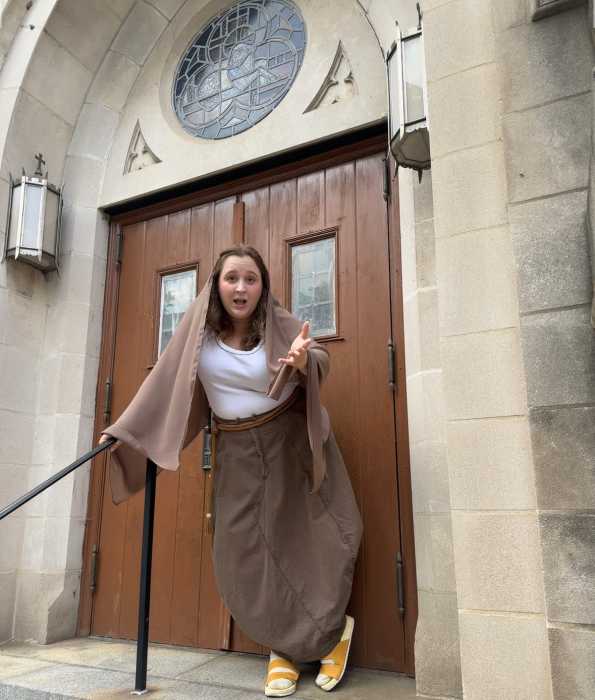Composer Péter Eötvös, who adapted Tony Kushner’s “Angels In America” for opera. | MARCO BORGGREVE
ELI JACOBSON | Tony Kushner completed his two part opus “Angels in America: A Gay Fantasia on National Themes” in the early 1990s as a visceral response to critical issues that dominated the previous decade — the rise of Ronald Reagan, the emergence of AIDS, New Yorkers’ response to the crisis, and the culture wars that created a critical fault line in our society. With the LGBTQ community at risk and a new millennium in the offing, Kushner was thinking and writing big, tackling powerful subjects such as life, death, religion, love, diversity, politics, spirituality, and embracing the “other.”
“Angels in America” has long incantatory monologues that are almost spoken arias — with larger-than-life emotions, heightened dramatic conflicts, and powerful spiritual and political themes that made Kushner’s piece a natural for operatic adaptation.
On November 23, 2004, Hungarian composer Péter Eötvös premiered his operatic adaptation “Angels in America: the Opera” at the Théâtre du Châtelet in Paris. The English-language libretto by Eötvös’ wife Mari Mezei condenses more than six hours of theater into a two and a half hour opera, distilling the characters and their complicated intersecting lives into representative scenes. In this country, Eötvös’ opera has been performed previously in Los Angeles, Fort Worth, and Boston.
NYCO brings Péter Eötvös, Mari Mezei adaptation of Tony Kushner’s cri de coeur to Lincoln Center
The New York City Opera is producing “Angels in America” for four performances from June 10 to June 16 at Jazz at Lincoln Center’s Rose Theater — the launch of what it intends as an annual LGBTQ Pride Initiative. (Next June, NYCO will produce Charles Wuorinen’s “Brokeback Mountain.”) This production will bring the “Angels in America” opera home to the city where Kushner’s play was conceived and where most of its far-flung action is set.
Sam Helfrich directs the NYCO production. | YOUTUBE.COM/ PALM BEACH OPERA
The NYCO production will be directed by Sam Helfrich and conducted by Pacien Mazzagatti. Both men talked to Gay City News about this opera and how it speaks to 21st century America:
ELI JACOBSON: The introduction of antiretroviral drugs in the mid ‘90s changed the face of the AIDS epidemic from a death sentence into (for most) a manageable disease. Tony Kushner’s “Angels in America” was conceived and written circa 1990 when the epidemic was still raging and taking young lives. Twenty-seven years later, is this story still pertinent or is it an historical piece? How have the changes in our culture over time affected the director’s and performers’ approach to this opera? Also, have recent events in American politics made “Angels in America” more pertinent and timely?
SAM HELFRICH: “Angels in America” has been with us for over a quarter of a century, and in that time, the nature of the AIDS epidemic has changed radically, as you point out. However, I believe the great revelation of this play is that it is not a play about disease, but rather a play about so many other things, like abandonment, loneliness, fear of death, skepticism of God and religion. A contemporary audience can’t possibly feel the immediacy of the AIDS epidemic the way audiences, especially in New York, must have felt it in the early ‘90s, and yet the play — and the opera — continue to attract audiences, which means the play provokes thought and inspires self-reflection about all of these other aspects of human experience. It was probably true at the beginning, but maybe it was too difficult in 1992 or so to experience the play in any other way than as a reflection on the AIDS crisis, and now the world has changed, so that’s not true anymore.
EJ: What are the big differences between the play and the operatic adaptation by Peter Eötvös and librettist Mari Mezei? Mezei has taken both plays, condensing it all into a two and a half hour evening of opera. What is lost and what is gained in the adaptation into musical theater? What do you miss from the play and what has been improved by being set to music and sung? Kushner writes scenes where the metaphysical and the real intersect. Does music get in the way here or bring these scenes to truer, greater life?
SH: “It is really for the audience to decide for themselves whether music brings the play — or specific scenes — to truer or greater life, but I personally believe that we are better off if we try to experience the opera as just that, and not as a version of or reduction of the play. Opera as an art form is uniquely suited to challenging notions of time and states of being, as music on its own can create moods and atmospheres and require active listening. I have not spoken with the composer or librettist, but clearly something about the play inspired the team to want to rethink it as an opera, the process of which naturally requires condensation.
There are several subplots and sub-themes in the play that have not found their way into the opera, to be sure, but at the same time the music is extraordinary in its ability to illuminate the states of uncertainty and confusion in which the characters exist simply through its expansiveness and the unsettling phenomenon of naturalistic dialog sung, and sometimes spoken, at jarringly surreal tempi. It is simply a different experience. Textually, the real and the metaphysical intersect more often in the play, but here in the opera the real is automatically relocated in the realm of the metaphysical because of how music shifts perception to begin with.
EJ: How will the NYCO production be distinct from earlier mountings? What approach is the artistic team striving for?
SH: Visually, our production intentionally translates the idea of a “fantasia” (as Kushner calls it) into a space which can contain the logistics of the opera — scene changes, costume changes, singers cast in multiple roles, in ways that present perhaps more challenges than the play does — while evoking the era (the late ‘80s), its architecture, and some of its iconic design elements. Having not seen all of those other productions, I can’t speak to how distinct our production will be, but our approach from the outset has been to investigate the piece in terms of what it means now, to figure out why it endures, and to present it to a New York audience which has firsthand memory and experience of the AIDS crisis and, at the same time, has long since moved on to other preoccupations. Only by acknowledging and embracing that can we possibly present this piece with any kind of conviction about its larger and deeper meanings.
Conductor Pacien Mazzagatti. | PACIENMAZZAGATTI.COM
In 1998, composer Eötvös adapted another classic play — Anton Chekhov’s “Three Sisters” — into a chilly, emotionally remote opera in a spare modernistic style with three countertenors portraying Olga, Masha, and Irina. Eötvös’ “Angels in America” shocked listeners with a major departure in style and content — his eclectic score is emotionally raw, full of percussion, and jazz inflected. Conductor Pacien Mazzagatti discusses the bold musical language of “Angels”:
PACIEN MAZZAGATTI: In this opera, Eötvös employs an incredibly broad musical palette, both in the pit and on the stage. The vocal ranges are often incredibly wide — the 30-piece orchestra includes an electric guitar, a Hammond organ, and an impressive list of percussion instruments — and digital sound effects are employed throughout the opera. At first, the sheer sonic variety can be overwhelming, but the two hours of music are beautifully and meticulously organized. Motifs related to specific characters and situations appear and re-appear as dictated by the action, and the atmospheric portions of the score manage to create the ambiance of familiar New York locations without resorting to clichés.”
Eötvös often weaves spoken lines from Kushner’s text between the sung phrases, in effect allowing Kushner’s words to be unadorned in those moments where it heightens their dramatic effect. He also employs a broad range of vocal styles, borrowing freely from Ashkenazic cantillation, Mormon hymnody, pop crooning, and close-harmony jazz singing to highlight the diverse backgrounds of the inhabitants of Kushner’s drama and illuminate their characters.
“Angels in America” moves rapidly through many diverse locations — from Roy Cohn’s law office to the imagination of a Valium addict, to Central Park at 4 a.m., and even to Heaven itself. Through his masterful orchestration, Eötvös creates a distinct and unique musical atmosphere for each of the opera’s 17 scenes. A unique feature of this opera is a vocal trio that sits in the pit with the orchestra. They sing throughout the opera, repeating and emphasizing words and phrases from the libretto. The effect is startling, surreal, and sometimes even comic, yet in the context of this piece’s internal logic it brings an added dimension and greater depth to the drama.
I asked Helfrich what he wanted audiences to take away from “Angels in America” in 2017:
SH: “I don’t know that the piece is meant to change perceptions as much as it is to inspire self-reflection and simply ask the audience to think about things that may or may not be part of its daily experience. It’s also meant to be entertaining. New Yorkers have come a long way since the ‘80s in how we think about sexuality, homosexuality, and the “other.” Politically, we’ve shifted from living in the AIDS era to living in the 9/11 era, which no one feels more acutely than people in this city. But questions about death, life, spirituality, the range of human experience are enduring ones, questions we will never stop asking. I believe “Angels in America” will continue to teach us about what it means to be human, including all of the uncertainty, hypocrisy, suffering, and pain that go along with it. And in the end, I think this is a town that loves a good show.
In London, the National Theatre is presenting Tony Kushner’s original two-evening play in a star-studded revival starring Nathan Lane and Andrew Garfield. This production will travel to Broadway next season.
“Angels in America” presents among its wide cast of characters a real historical person — Roy Cohn, the red-baiting former aide to Senator Joe McCarthy and a fearsome conservative lawyer. Cohn was also a closeted homosexual who died of AIDS. In the play, the fictional Cohn is the mentor to sexually conflicted Mormon lawyer Joe Pitt. In the 1980s, the nonfictional Cohn was mentor to Donald Trump. The divisive politics of fear, demonization of the “other,” and innuendo parading as fact exploited by Trump and the alt-right follows very closely the McCarthy playbook Cohn scripted. Trump is very much a product of the 1980s and the current Republican Party reveres Reagan as a presidential ideal. The LGBTQ community is facing a new round of repressive and discriminatory laws in this country promoted by the religious right and Republican politicians.
Sometimes we need to listen to the message revealed by “Angels” — and that time is now.
ANGELS IN AMERICA | New York City Opera | Rose Theater, Jazz at Lincoln Center, 10 Columbus Circle, Broadway at 60th St. | Jun. 10 at 8 p.m.; Jun. 12, 14 & 16 at 7:30 p.m. | $20-$160.50 at nycopera.com/angels-in-america





































